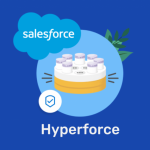Salesforce Classic has been the go-to CRM platform for many businesses, but with the introduction of Salesforce Lightning, it’s time to consider migrating to the new and enhanced user interface. Migrating to Salesforce Lightning not only gives you access to new features and updates exclusive to the Lightning UI but also offers a more modern and intuitive user experience. In this comprehensive guide, we will explore the benefits of migrating to Salesforce Lightning, the challenges you may encounter, and how to successfully navigate the migration process.
Why Migrate to Salesforce Lightning?
Salesforce Lightning offers a range of benefits that can significantly improve your CRM experience. Here are some key reasons why you should consider migrating from Salesforce Classic to Lightning:
- Enhanced User Interface: Salesforce Lightning introduces a more modern and visually appealing user interface, providing a better overall user experience. The Lightning UI is designed to be more intuitive, making it easier for users to navigate and find the information they need.
- Improved Productivity: Lightning offers enhanced productivity features such as the Kanban view, Path, and Einstein Insights. These features help streamline business processes, increase efficiency, and empower sales teams to close deals faster.
- Mobile-First Approach: Salesforce Lightning is optimised for mobile devices, allowing users to access and manage their CRM data on the go. The Lightning mobile app provides a seamless experience, enabling users to stay productive while on the move.
- Advanced Customization: Lightning allows for greater customization and flexibility compared to Classic. With Lightning App Builder, you can easily create custom pages, components, and dashboards tailored to your specific business needs.
Challenges of Salesforce Classic to Lightning Migration
While the benefits of Salesforce Lightning are undeniable, migrating from Classic to Lightning can be a complex and challenging process. Here are some common challenges you may encounter during the migration:
- User Adoption: Switching to a new user interface can be met with resistance from users accustomed to the Classic interface. Ensuring a smooth transition requires effective change management and user training to familiarise your team with the new Lightning UI.
- Customizations and Integrations: If your organisation heavily relies on customizations and integrations in Salesforce Classic, migrating those customizations to Lightning can be a daunting task. It requires a thorough assessment of your existing customizations and careful planning to ensure a seamless transition.
- Data Migration: Moving your data from Classic to Lightning requires careful planning and execution. You need to ensure that all your data is migrated accurately and that any data dependencies or integrations are accounted for to avoid any disruptions to your business processes.
- Third-Party Apps Compatibility: If you rely on third-party apps in Salesforce Classic, you need to assess their compatibility with Lightning. Some apps may require updates or replacements to work seamlessly in the Lightning environment.
Planning Your Salesforce Lightning Migration
To ensure a successful Salesforce Classic to Lightning migration, careful planning is essential. Here are the key steps you should follow:
1. Assess Readiness and Set Goals
Before starting the migration process, conduct a readiness assessment to evaluate if your organisation is prepared for the transition. Define your migration goals and objectives, and identify the key areas that will benefit most from the Lightning UI.
2. Create a Migration Roadmap
Develop a detailed migration roadmap that outlines the steps, timelines, and resource requirements for each phase of the migration. It’s crucial to have a well-defined plan to ensure a smooth and efficient transition.
3. Engage Salesforce Lightning Consulting Services
Working with Salesforce Lightning consulting services can greatly simplify your migration process. These experts have extensive experience in Salesforce migrations and can provide valuable guidance, best practices, and technical expertise to ensure a successful migration.
4. Customise and Optimise Features
During the migration, take the opportunity to optimise your Salesforce features and processes. Review your existing workflows, automations, and customizations, and identify areas for improvement. Customising Lightning features to align with your business processes can further enhance productivity and user adoption.
5. Data Migration and Validation
Migrating your data from Classic to Lightning requires careful planning and execution. Start by identifying your critical data and ensuring its accuracy and integrity. Develop a data migration strategy, including data cleansing, mapping, and testing, to ensure a seamless transition.
6. User Training and Change Management
User training and change management are crucial for ensuring a smooth transition and user adoption. Conduct comprehensive training sessions to familiarise your team with the new Lightning UI, highlighting the benefits and addressing any concerns or challenges they may have.
7. Test, Test, Test
Thoroughly test your Lightning environment to ensure that all customizations, integrations, and automations are working as expected. Test different scenarios and user workflows to identify and resolve any issues before going live.
8. Go Live and Provide Post-Migration Support
After completing all necessary preparations and testing, it’s time to go live with Salesforce Lightning. Monitor the system closely during the initial phase to address any issues promptly. Provide ongoing support to your users and gather feedback to continuously improve the user experience.
Leveraging Salesforce Lightning Consulting Services
Salesforce Lightning consulting services can be instrumental in ensuring a smooth transition from Salesforce Classic to Lightning. They bring expertise and technical knowledge to help you navigate the migration process effectively. Here’s how Salesforce Lightning consulting services can support your migration:
- Readiness Assessments: Consultants can assess your organisation’s readiness for the migration, identifying potential challenges and opportunities for improvement.
- Customization and Optimization: Consultants can help you customise and optimise Lightning features to align with your business processes, maximising productivity and user adoption.
- Data Migration and Validation: Consultants can assist with data migration planning, ensuring the accurate transfer of data from Classic to Lightning, and validating its integrity.
- User Training and Change Management: Consultants can conduct comprehensive training sessions and provide change management support to facilitate user adoption and minimise resistance to change.
- Post-Migration Support: Salesforce Lightning consulting services offer ongoing support, ensuring that any issues or challenges post-migration are promptly addressed, and your users can fully leverage Lightning’s advanced capabilities.
How Tech Talent Consulting can help you with Salesforce Classic to Lightning Migration Services?
Tech Talent Consulting ensures a smooth transition from Salesforce Classic to Lightning by conducting readiness assessments, customising and optimising features, managing data migration, and facilitating user training. We rigorously test the new environment and provide post-migration support, leveraging Lightning’s advanced capabilities to enhance your business processes and user experience.
In conclusion, migrating from Salesforce Classic to Lightning offers numerous benefits, including an enhanced user interface, improved productivity, and advanced customization options. While the migration process may present some challenges, careful planning, engagement of Salesforce Lightning consulting services, and thorough testing can ensure a successful transition. Embrace the power of Salesforce Lightning and unlock new possibilities for your business.
FAQs: Salesforce Classic to Lightning Migration
How to do migration from classic to lightning in Salesforce?
Use the Lightning Experience Migration Assistant, perform a readiness check, plan the transition, train users, and migrate in phases, ensuring all customizations and integrations are Lightning compatible.
How do I transition from classic to lightning?
Conduct a readiness assessment, create a transition plan, train your team on Lightning features, implement in phases, and continuously gather and act on user feedback.
How do I convert Salesforce Classic app to lightning?
Analyse the app’s compatibility with Lightning using the Lightning Experience Readiness Check, update Visualforce pages and layouts, use Lightning App Builder for customization, and test thoroughly before deployment.
How long does it take to migrate from Salesforce Classic to Lightning?
The time varies based on organisation size and complexity; it can range from a few weeks to several months. Small businesses might transition quickly, while large enterprises could take longer due to more complex customizations.
Why upgrade from Salesforce Classic to Lightning?
Upgrading to Lightning offers a modern interface, improved analytics and reporting, enhanced customization and automation capabilities, better integration options, and access to ongoing Salesforce innovations and updates.









